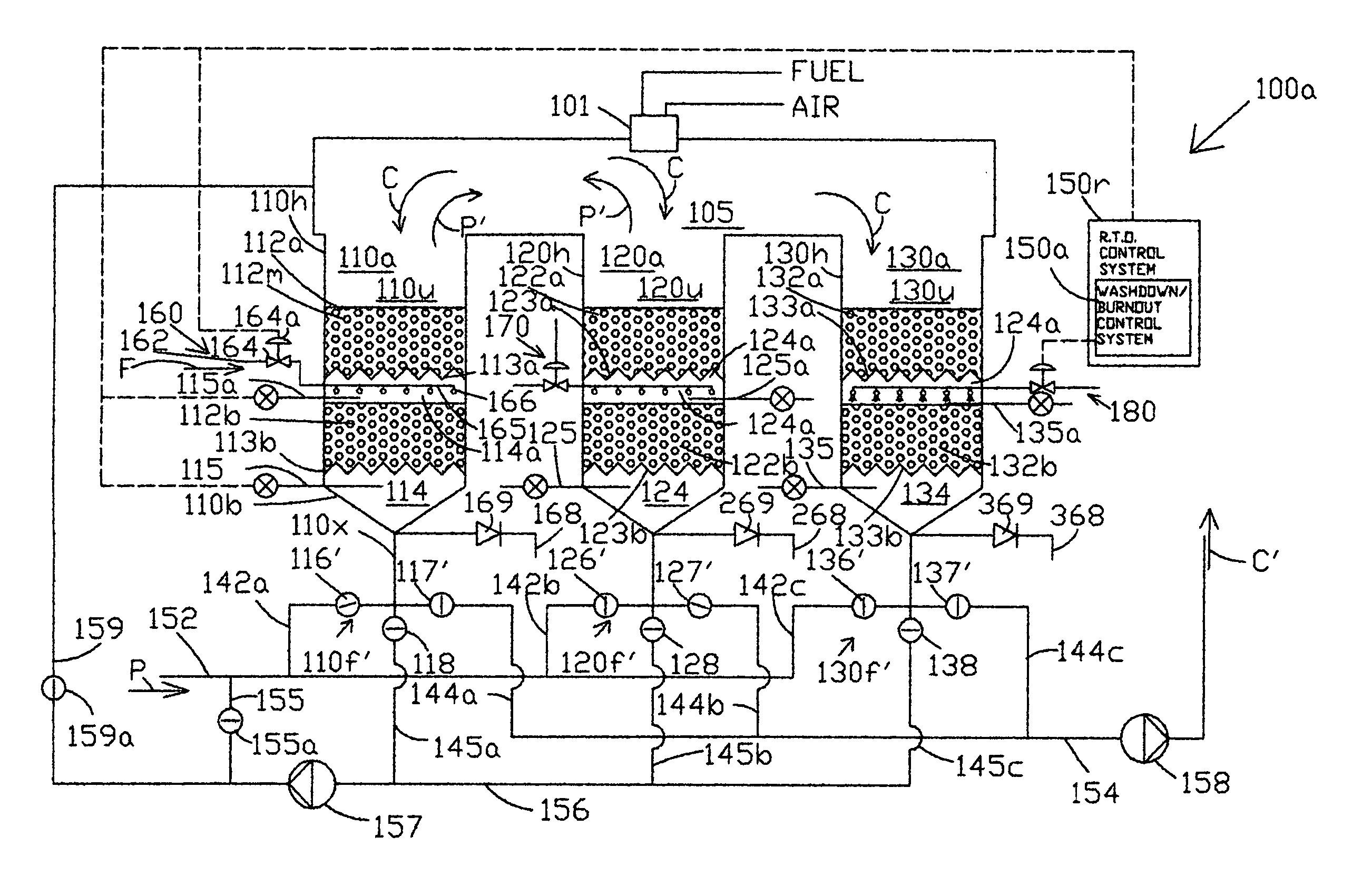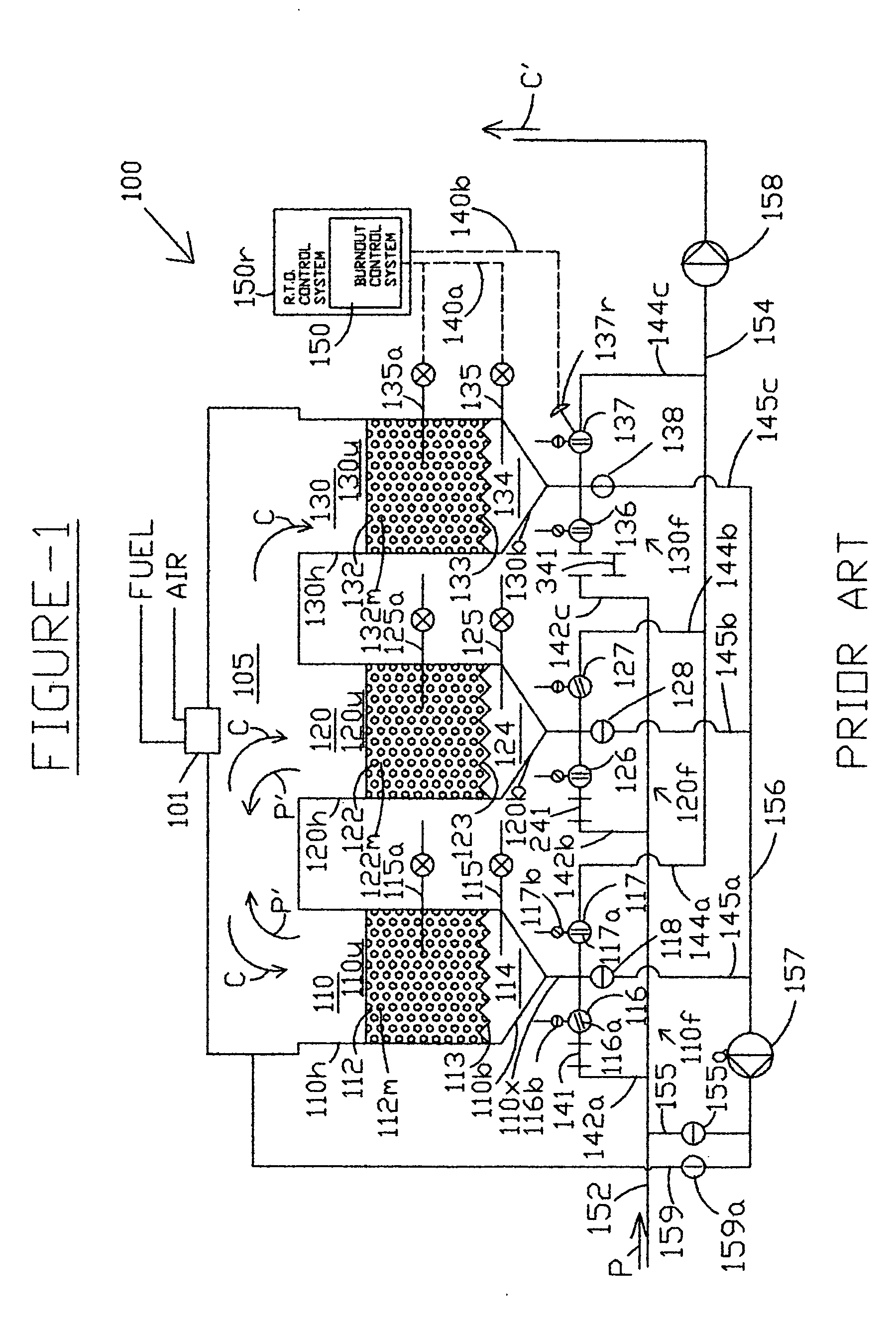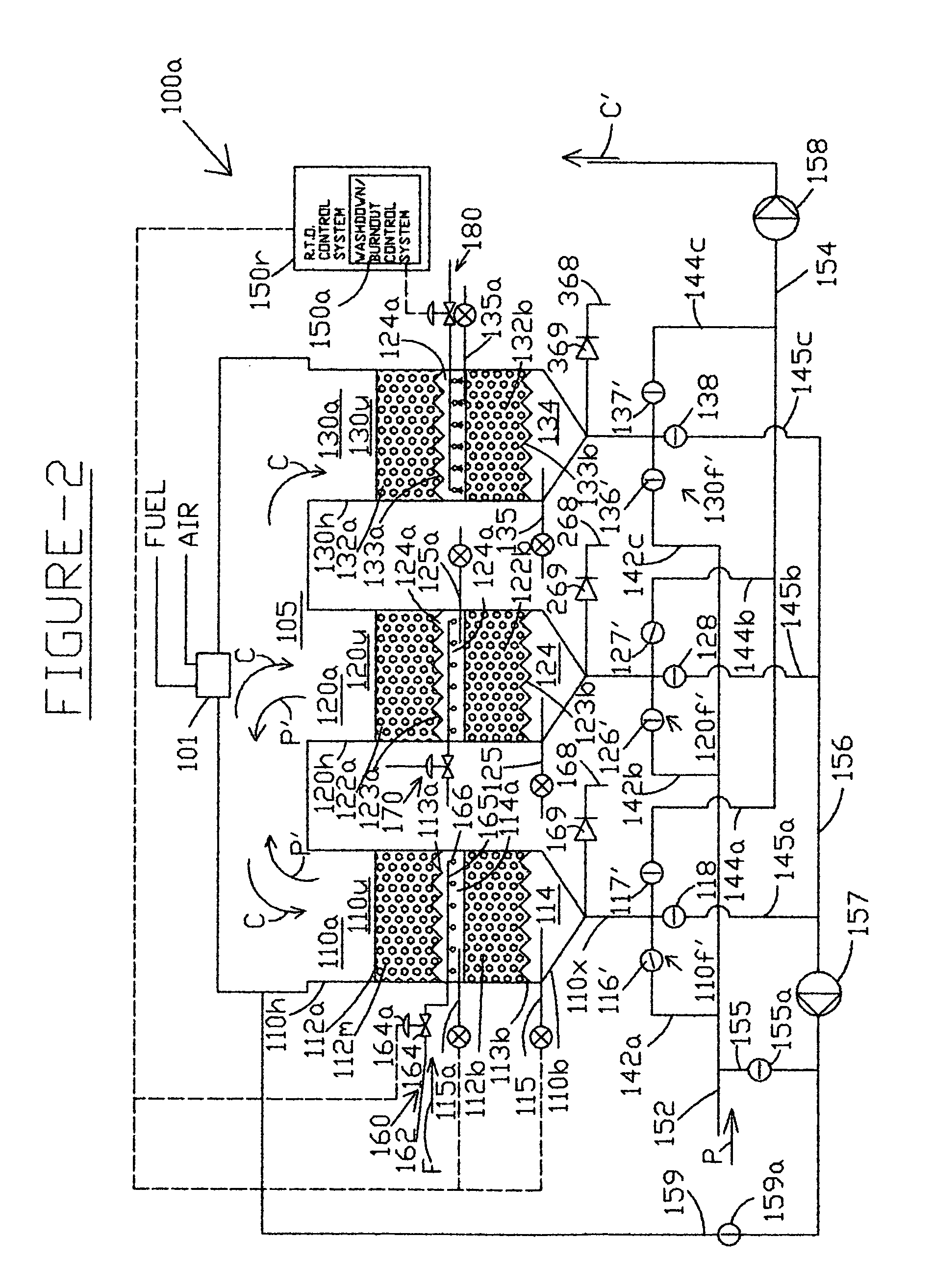Regenerative fume-incinerator with on-line burn-out and wash-down system-
a regenerative fume incinerator and online technology, applied in lighting and heating apparatus, cleaning using liquids, combustion types, etc., can solve the problems of not being useful in removing non-combustible deposited matter from prone to fouling, and relatively dense heat sink media in the regenerative heat exchanger of regenerative fume incinerators
- Summary
- Abstract
- Description
- Claims
- Application Information
AI Technical Summary
Benefits of technology
Problems solved by technology
Method used
Image
Examples
Embodiment Construction
[0022] As defined herein, the term “inlet mode of operation” describes the mode of operation of the regenerative heat exchanger wherein the gas is introduced into the regenerative heat exchanger from the cold end of the regenerative heat exchanger. The inlet mode of operation occurs when (1) the cold polluted gas is introduced into the regenerative heat exchanger through the inlet damper (a “normal inlet mode of operation”) or (2) a portion of the cooled cleansed gas is recycled back through a purge damper into the cold end of the regenerative heat exchanger to displace the residual polluted gas of the previous cycle into the combustion chamber (a “positive purge mode of operation”).
[0023] Further, as defined herein, the term “outlet mode of operation” describes the mode of operation of the regenerative heat exchanger wherein the gas is introduced into the regenerative heat exchanger from the hot end of the regenerative heat exchanger. The outlet mode of operation occurs when (1) t...
PUM
 Login to View More
Login to View More Abstract
Description
Claims
Application Information
 Login to View More
Login to View More - R&D
- Intellectual Property
- Life Sciences
- Materials
- Tech Scout
- Unparalleled Data Quality
- Higher Quality Content
- 60% Fewer Hallucinations
Browse by: Latest US Patents, China's latest patents, Technical Efficacy Thesaurus, Application Domain, Technology Topic, Popular Technical Reports.
© 2025 PatSnap. All rights reserved.Legal|Privacy policy|Modern Slavery Act Transparency Statement|Sitemap|About US| Contact US: help@patsnap.com



